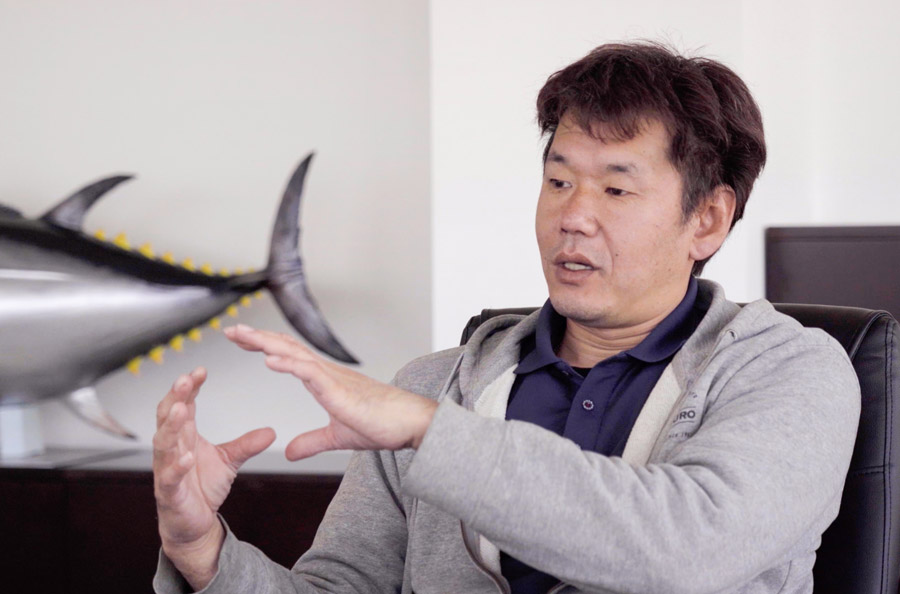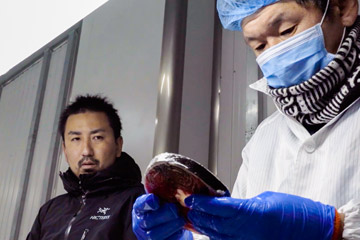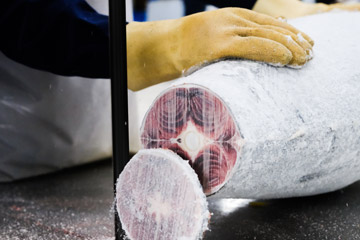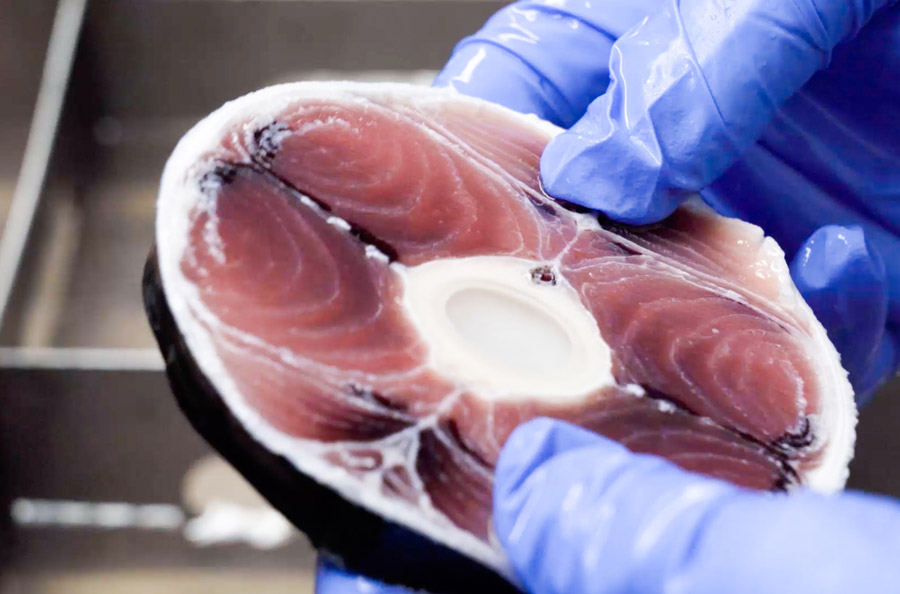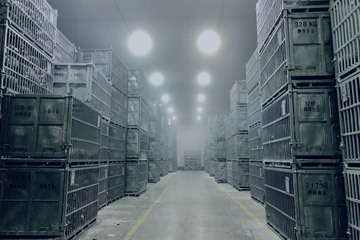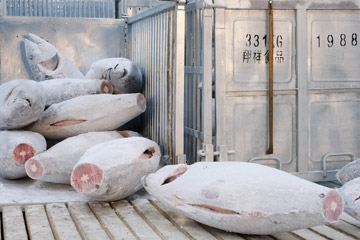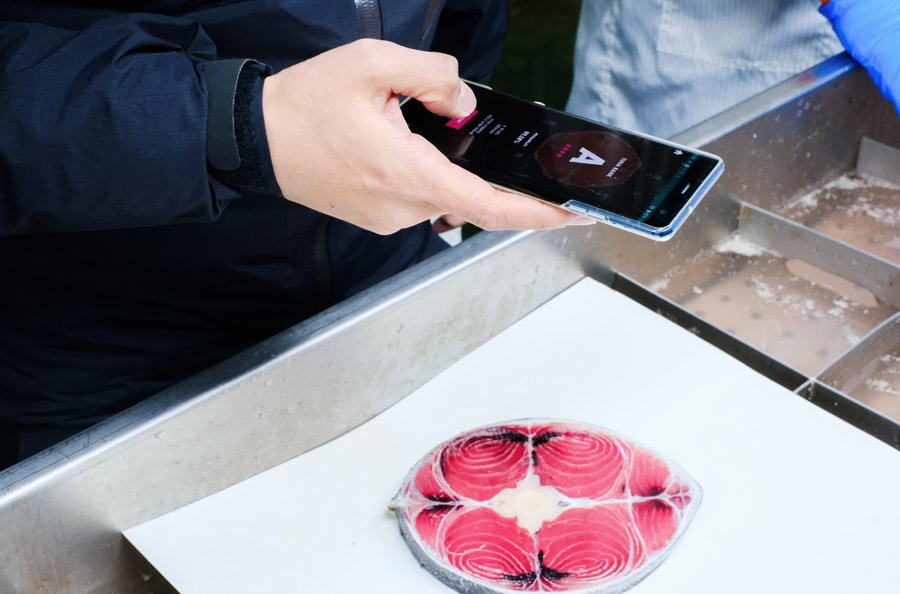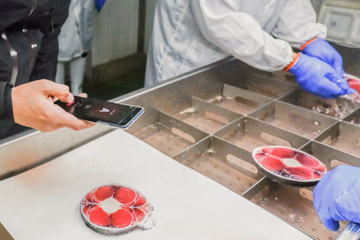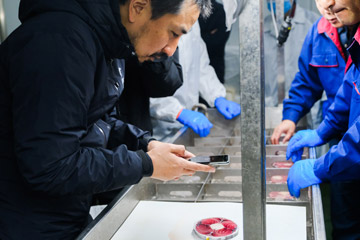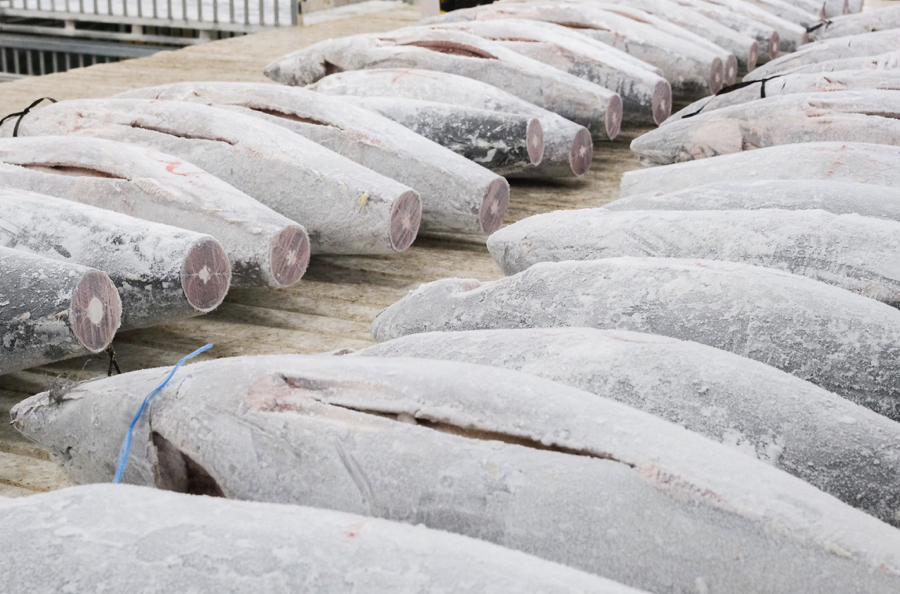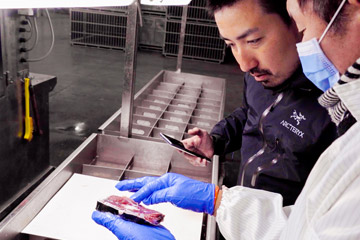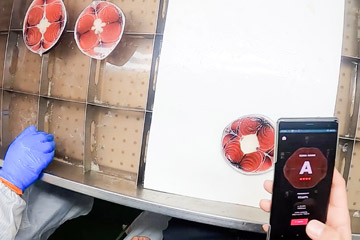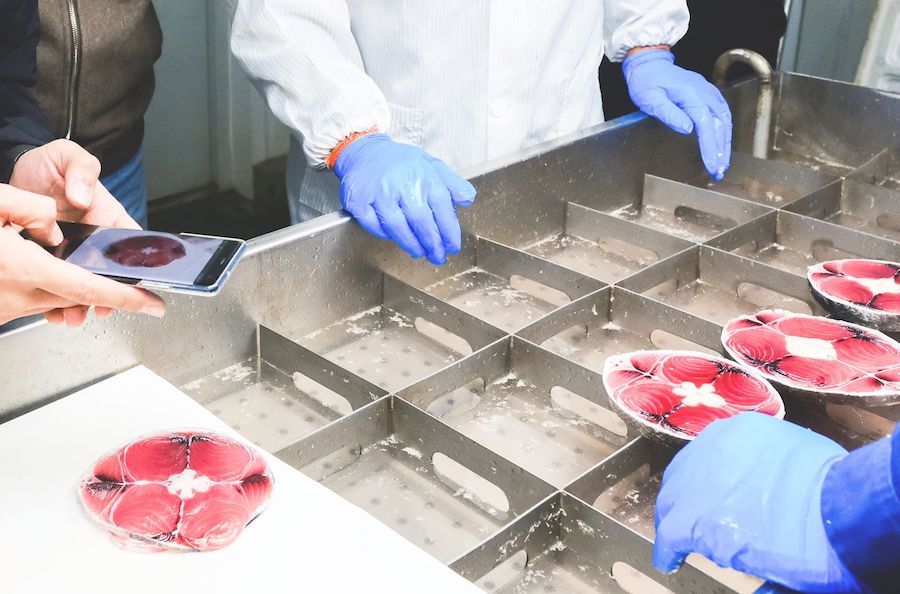
Dalian, China. With one of the world’s largest international trading ports and as a major hub for seafood processing, Dalian is a city that serves a vital function for China.
Together with Mr. Ishii, an artisan from Misaki Megumi Suisan who has mastered the craft of tuna inspection through years of experience in Japan, we carried out a quality inspection in Dalian at a processing facility belonging to Dalian Global Food Corporation, a subsidiary of the general trading company Sojitz Corporation, ahead of the facility’s implementation of the AI inspection system TUNA SCOPE.
An AI examiner and a skilled master artisan. How consistent will their quality inspection results be?
While reverifying the accuracy of the AI system, we pondered the possibilities of TUNA SCOPE and its potential to digitally transform the tuna business.

